Discover a comprehensive guide to trees that start with ‘N’. From majestic natives to exotic varieties, explore their characteristics, uses and how to incorporate them into your landscape.
Trees are nature’s gentle giants. They give us shade, clean our air and make our world more beautiful. Today, we’re going to look at some special trees – ones whose names start with the letter ‘N’. These trees are unique and interesting and you might find one that’s perfect for your yard or garden.
Let’s dive into the world of ‘N’ trees and learn about their features, how to care for them and why they might be a great choice for you.
1. Narra Tree
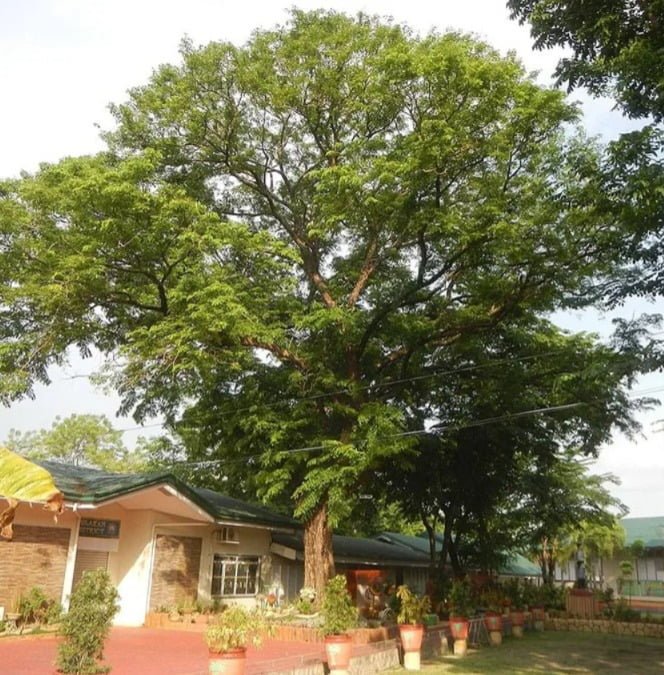
Here’s a short information chart about the Narra Tree:
| Name: | Narra Tree |
|---|---|
| Scientific Name: | Pterocarpus indicus |
| Family: | Fabaceae (Legume family) |
| Native To: | Southeast Asia, specifically the Philippines, India and Myanmar |
| Other Names: | Red Sandalwood, Amboyna, Andaman Redwood |
| Appearance: | Tall, deciduous tree with reddish-brown heartwood; leaves are compound with 5-7 leaflets |
| Uses: | Timber used in furniture, carvings and construction; important cultural and symbolic tree in many Southeast Asian countries |
| Flowers/Fruits: | Yellow flowers; pod-like fruits with seeds |
| Ecological Role: | Provides habitat and food for wildlife; helps in soil conservation |
| Cultural Significance: | National tree of the Philippines (as “narra”); revered in folklore and traditional medicine |
The Narra tree, also known as the Philippine Mahogany, is a big, beautiful tree from Southeast Asia. It can grow up to 130 feet tall! That’s as high as a 13-story building.
Key features:
- Big, spreading crown that gives lots of shade
- Yellow flowers that smell nice
- Wood that’s valued for furniture making
The Narra tree is great for large spaces. It needs room to grow and spread out. If you have a big yard, this tree could be a stunning centerpiece. The Narra tree’s ecological importance extends beyond its beauty, playing a crucial role in its native ecosystems.
2. Norway Maple
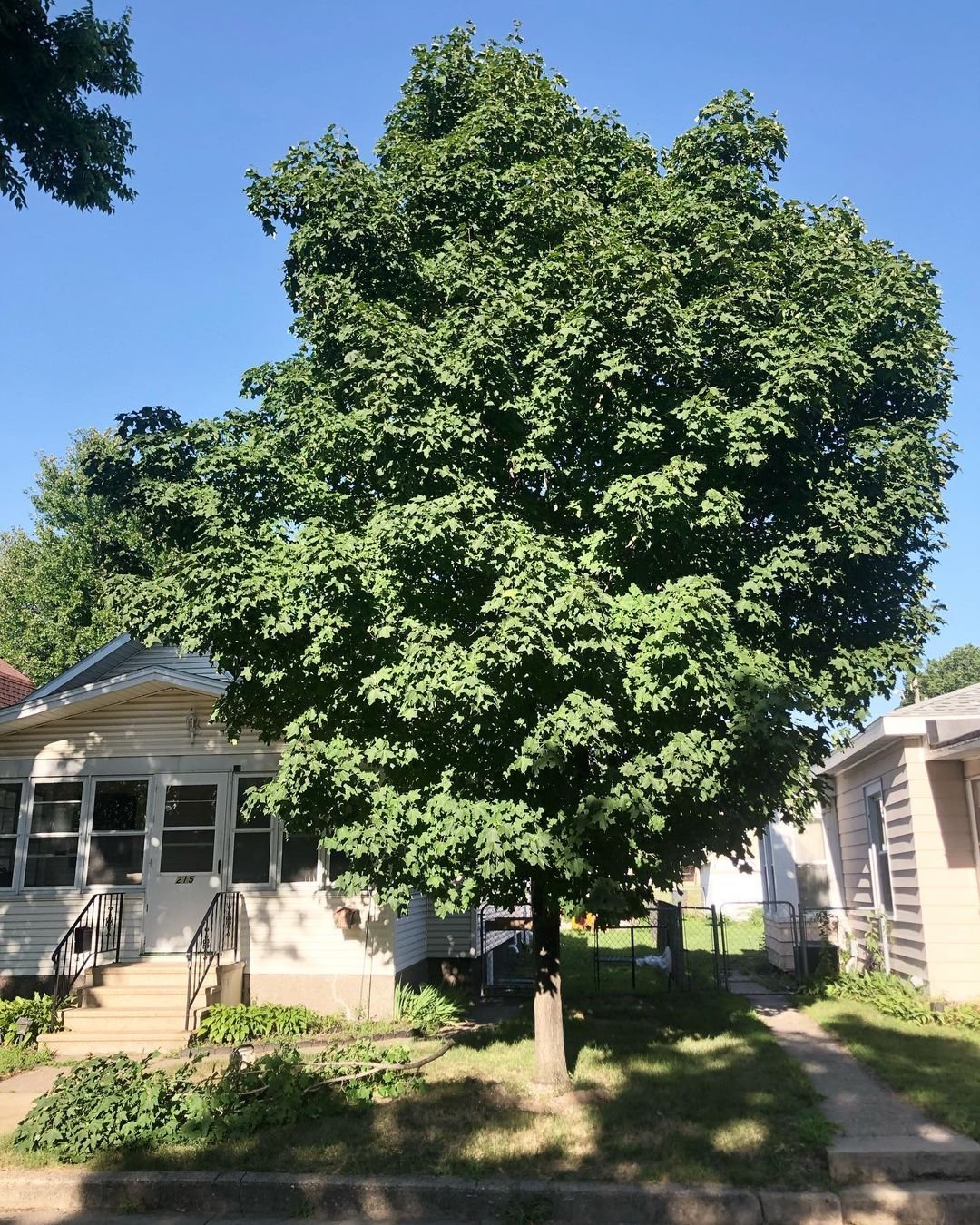
Here’s a short information chart about the Norway Maple:
| Name: | Norway Maple |
|---|---|
| Scientific Name: | Acer platanoides |
| Family: | Sapindaceae (Soapberry family) |
| Native To: | Europe and western Asia |
| Other Names: | None widely recognized |
| Appearance: | Medium to large deciduous tree; leaves are palmately lobed with five lobes, turning yellow in autumn |
| Uses: | Ornamental tree in landscaping; timber used for furniture and veneer |
| Flowers/Fruits: | Yellow-green flowers in spring; paired winged seeds (samara) |
| Ecological Role: | Can be invasive in North America, displacing native species; provides shade and habitat in its native range |
| Cultural Significance: | Not significant culturally or symbolically |
The Norway Maple is a popular street tree in many parts of the world. It’s tough and can handle city life well.
Key features:
- Grows 40-60 feet tall
- Dense, rounded crown
- Leaves turn yellow in fall
Be careful where you plant a Norway Maple. Its roots grow close to the surface and can damage sidewalks or lawns. But in the right spot, it’s a hardy, low-maintenance tree. For detailed Norway Maple care instructions, consult your local extension office.
3. Neem Tree
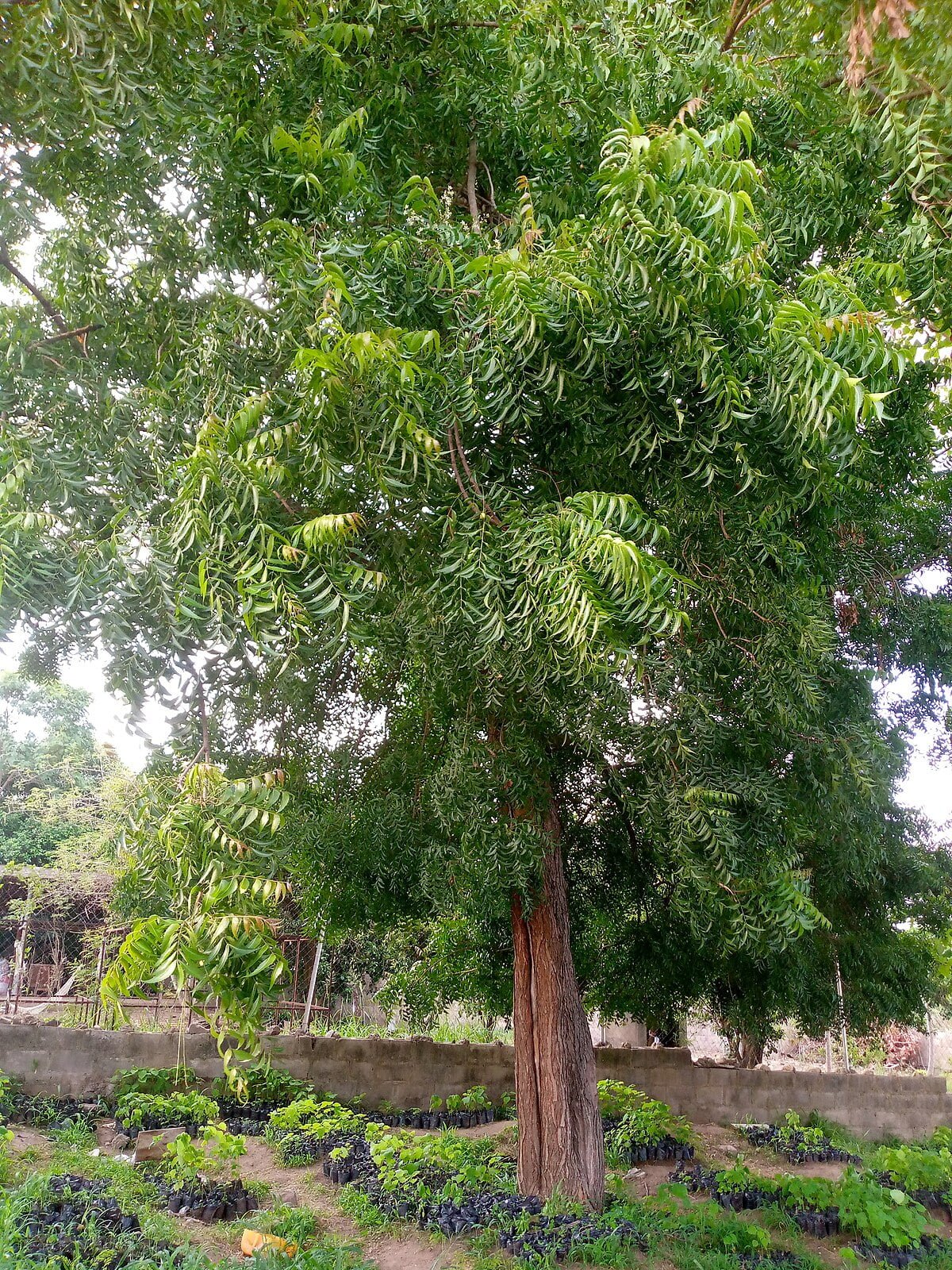
Here’s a short information chart about the Neem Tree:
| Name: | Neem Tree |
|---|---|
| Scientific Name: | Azadirachta indica |
| Family: | Meliaceae (Mahogany family) |
| Native To: | Indian subcontinent, introduced to other tropical and subtropical regions worldwide |
| Other Names: | Indian Lilac, Nimtree |
| Appearance: | Medium to large evergreen tree with a dense crown; leaves are compound with serrated edges |
| Uses: | Medicinal uses (in Ayurveda), cosmetic products (neem oil), pest control (neem extracts), timber and fodder |
| Flowers/Fruits: | Small white flowers; olive-like fruits containing seeds |
| Ecological Role: | Provides shade, fodder for livestock; has insecticidal properties and is used in agroforestry |
| Cultural Significance: | Highly valued in traditional medicine (Ayurveda); considered sacred in Indian culture; associated with various religious rituals |
The Neem tree is famous for its medicinal uses. It’s been used in traditional medicine for thousands of years.
Key features:
- Grows 50-65 feet tall
- Evergreen leaves
- Small white flowers
Neem trees are tough and can grow in poor soil. They’re often used in hot, dry areas because they don’t need much water once they’re established. Neem’s medicinal properties have been studied extensively, showing promise in various health applications.
This approach integrates the links more naturally into the text, using relevant keywords that relate directly to the content of the linked resources. This method improves readability and SEO effectiveness.
4. Northern Red Oak
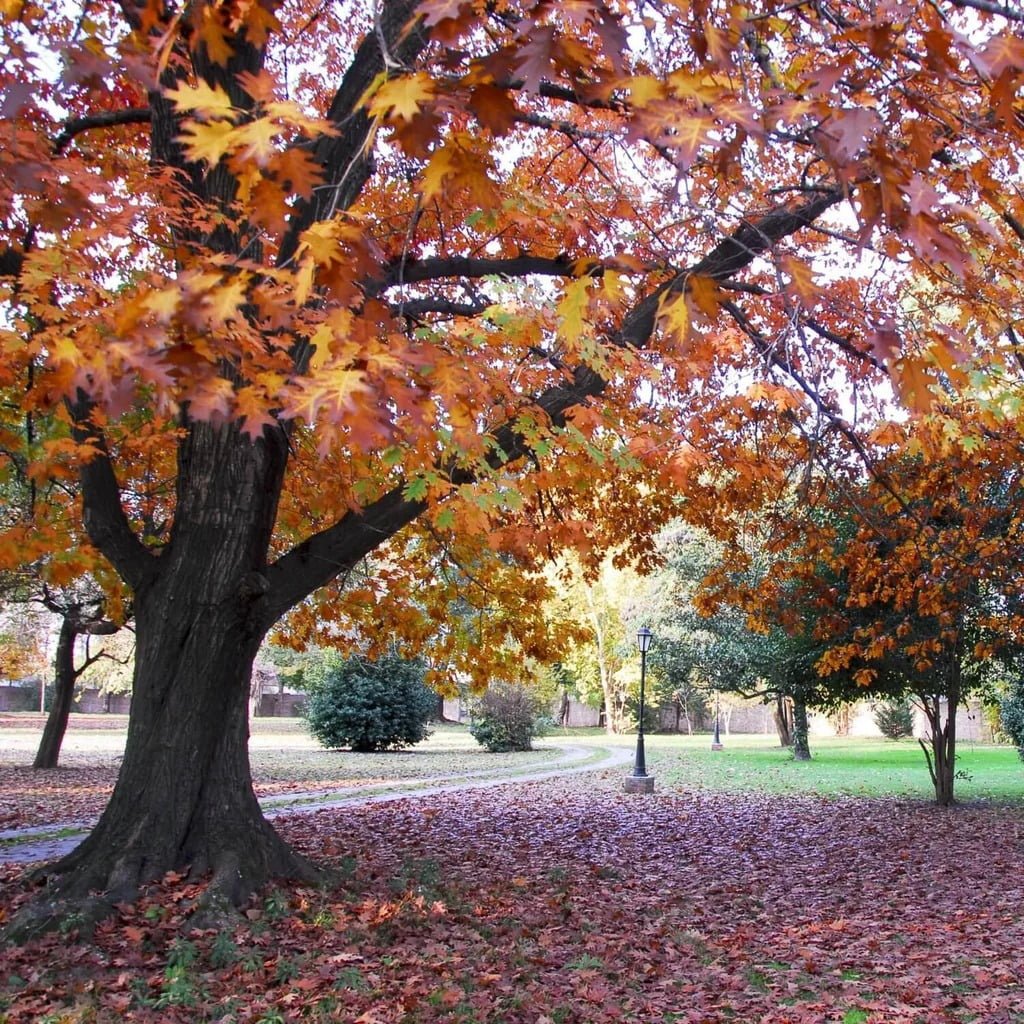
Here’s a short information chart about the Northern Red Oak:
| Name: | Northern Red Oak |
|---|---|
| Scientific Name: | Quercus rubra |
| Family: | Fagaceae (Beech family) |
| Native To: | Eastern North America |
| Other Names: | Champion Oak, Red Oak |
| Appearance: | Large deciduous tree with a broad, rounded crown; leaves are lobed with pointed tips, turning red in autumn |
| Uses: | Timber used in furniture, flooring and construction; also used in landscaping for its ornamental value |
| Acorns: | Large acorns with a shallow cap |
| Ecological Role: | Provides habitat and food for wildlife; important in forest ecosystems |
| Cultural Significance: | Not significant culturally or symbolically on a large scale |
The Northern Red Oak is a classic American tree. It’s big, strong and lives for a long time.
Key features:
- Can grow over 90 feet tall
- Leaves turn bright red in fall
- Produces acorns that wildlife love
This tree is great for large landscapes. It grows fast for an oak and provides excellent shade. Plus, its fall color is spectacular! The Northern Red Oak’s adaptability makes it a popular choice for urban forestry projects.
5. Nutmeg Tree

Here’s a short information chart about the Nutmeg Tree:
| Name: | Nutmeg Tree |
|---|---|
| Scientific Name: | Myristica fragrans |
| Family: | Myristicaceae |
| Native To: | Banda Islands of Indonesia |
| Other Names: | True Nutmeg, Fragrant Nutmeg |
| Appearance: | Medium-sized evergreen tree; leaves are leathery and glossy |
| Uses: | Seeds (nutmeg) used as a spice, both whole and ground; also used in traditional medicine and perfumery |
| Fruits: | Yellowish fruit resembling an apricot, containing a seed (nutmeg) surrounded by a red aril (mace) |
| Ecological Role: | Provides habitat and food for wildlife in its native range; cultivated for its spice worldwide |
| Cultural Significance: | Important spice in global cuisine; historically traded and valued; associated with culinary traditions and medicinal uses |
The Nutmeg tree gives us two spices – nutmeg and mace. It’s a tropical tree that needs warm weather to thrive.
Key features:
- Grows 30-60 feet tall
- Fragrant flowers
- Produces nutmeg seeds and mace
Unless you live in a tropical climate, you’ll need to grow this tree in a greenhouse. But if you can, it’s a fascinating plant with a rich history. Nutmeg cultivation techniques have been refined over centuries, resulting in improved yields and quality.
6. Norfolk Island Pine
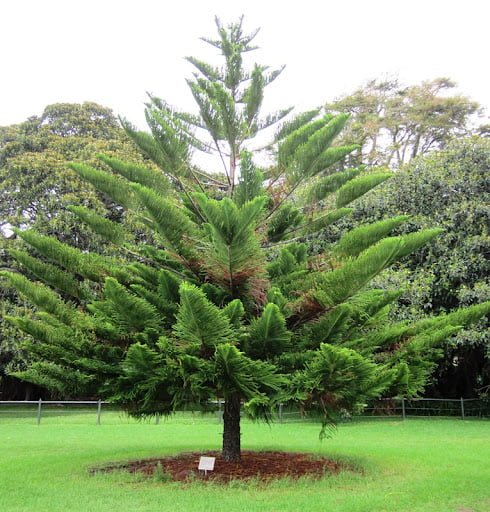
Here’s a short information chart about the Norfolk Island Pine:
| Name: | Norfolk Island Pine |
|---|---|
| Scientific Name: | Araucaria heterophylla |
| Family: | Araucariaceae |
| Native To: | Norfolk Island (in the South Pacific Ocean) |
| Other Names: | Star Pine, Triangle Tree |
| Appearance: | Tall evergreen conifer with symmetrical branches arranged in whorls; resembles a Christmas tree |
| Uses: | Ornamental tree in landscaping and as indoor potted plants; used in coastal regions for windbreaks and erosion control |
| Cones: | Large, woody cones containing edible seeds (not true pine nuts) |
| Ecological Role: | Provides habitat and nesting sites for birds; contributes to stabilizing soil in its native habitat |
| Cultural Significance: | Popular as a decorative tree during the holiday season; symbolizes resilience and endurance |
Despite its name, the Norfolk Island Pine isn’t actually a pine. It’s often used as a living Christmas tree.
Key features:
- Can grow over 200 feet tall in nature (much smaller in pots)
- Symmetrical, triangular shape
- Soft, bright green needles
These trees make great indoor plants. They’re slow-growing and can live in pots for many years. Norfolk Island Pine care is relatively simple, making it a popular choice for indoor tree enthusiasts.
7. Nyssa Tree (Nyssa sylvatica)

Here’s a short information chart about the Nyssa Tree (Nyssa sylvatica):
| Name: | Nyssa Tree (Nyssa sylvatica) |
|---|---|
| Scientific Name: | Nyssa sylvatica |
| Family: | Cornaceae (Dogwood family) |
| Native To: | Eastern North America |
| Other Names: | Black Gum, Sour Gum, Tupelo |
| Appearance: | Medium to large deciduous tree with a pyramidal to oval crown; leaves are glossy green, turning brilliant red or purple in autumn |
| Uses: | Timber used in furniture, veneer and pallets; landscaping for its ornamental fall foliage |
| Fruits: | Bluish-black, sour-tasting drupes |
| Ecological Role: | Provides food for wildlife, especially birds; grows in wetlands and upland forests |
| Cultural Significance: | Not significant culturally or symbolically on a large scale |
Also known as the Black Gum or Tupelo, the Nyssa tree is a North American native. It’s known for its brilliant fall colors.
Key features:
- Grows 30-50 feet tall
- Leaves turn bright red, orange and yellow in fall
- Produces small fruits that birds love
Nyssa trees are great for wet areas. They can handle standing water and are often found near streams or in swampy areas. The Black Tupelo’s resilience makes it an excellent choice for challenging landscape situations.
8. Natal Plum
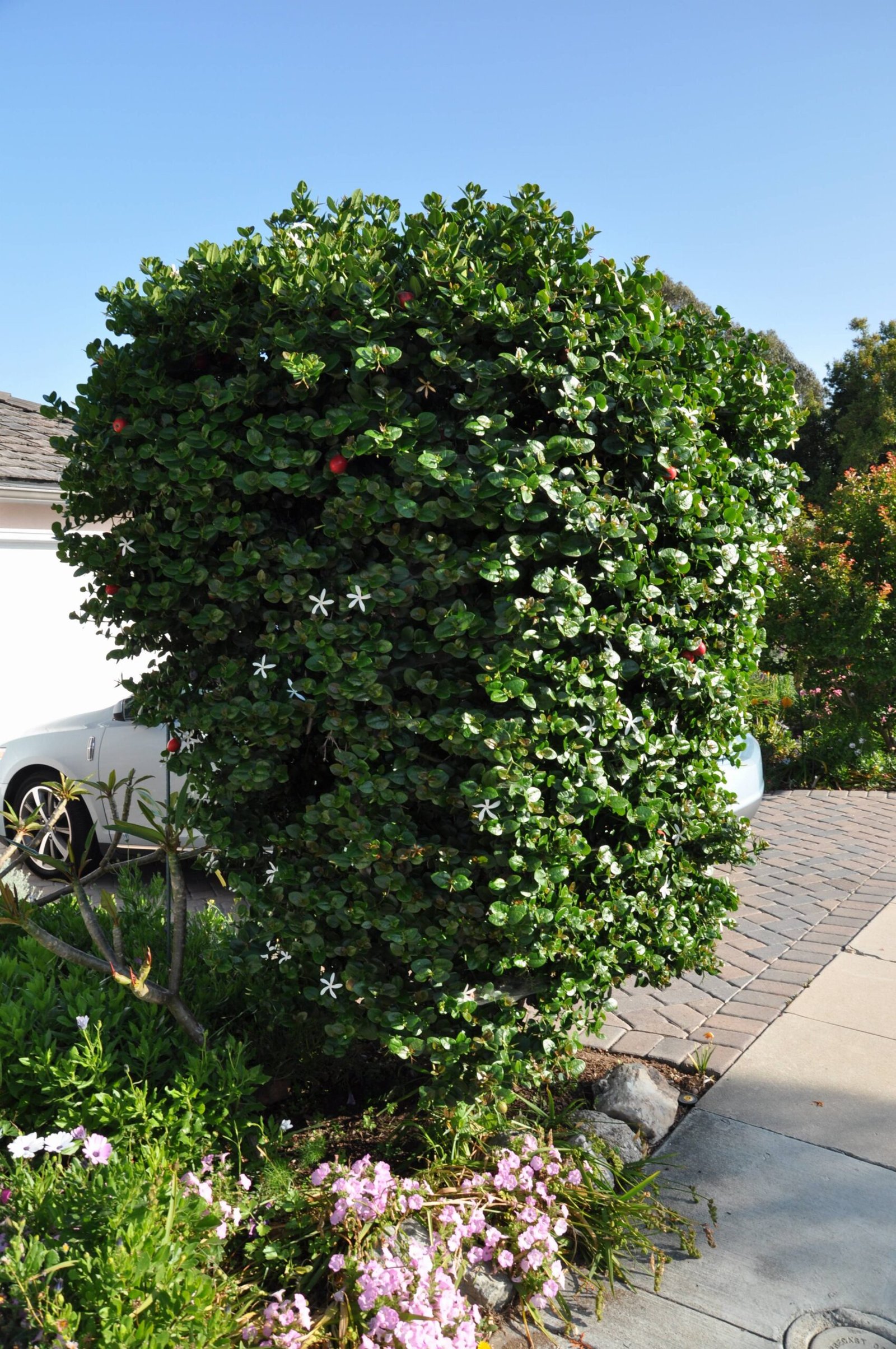
Here’s a short information chart about the Natal Plum:
| Name: | Natal Plum |
|---|---|
| Scientific Name: | Carissa macrocarpa |
| Family: | Apocynaceae (Dogbane family) |
| Native To: | Coastal regions of southern Africa |
| Other Names: | Amatungulu, Large Num-Num |
| Appearance: | Evergreen shrub with glossy, leathery leaves; white, star-shaped flowers; oval-shaped fruits |
| Uses: | Edible fruits used in jams, jellies and desserts; ornamental plant in landscaping |
| Fruits: | Red to purplish-black berries, about 2-4 cm in length |
| Ecological Role: | Provides habitat and food for wildlife; drought-tolerant and adaptable to coastal conditions |
| Cultural Significance: | Traditional medicinal uses in Africa; valued as a source of food and ornamental beauty |
The Natal Plum is a shrub or small tree from South Africa. It’s often used as a hedge plant in warm climates.
Key features:
- Grows 10-20 feet tall
- White, fragrant flowers
- Edible red fruits
Natal Plum is a tough plant that can handle salt spray, making it great for coastal gardens. Its fruits are tart but tasty. Natal Plum cultivation is gaining popularity in subtropical regions due to its versatility and low maintenance requirements.
9. Nectarine Tree
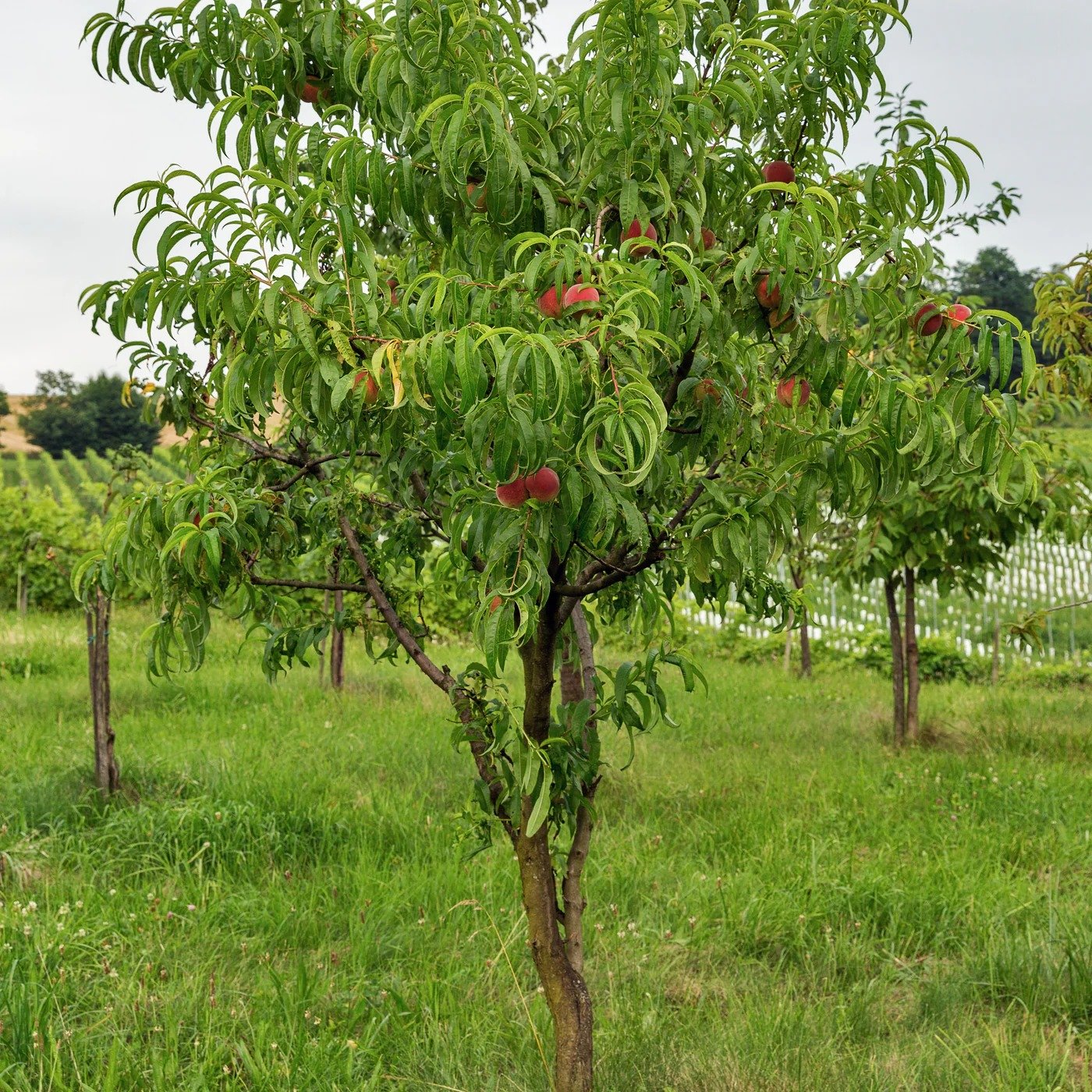
Here’s a short information chart about the Nectarine Tree:
| Name: | Nectarine Tree |
|---|---|
| Scientific Name: | Prunus persica var. nucipersica |
| Family: | Rosaceae (Rose family) |
| Native To: | Cultivated, believed to have originated from China or Persia |
| Other Names: | None widely recognized |
| Appearance: | Small to medium-sized deciduous tree; similar to peach tree but with smooth skin on the fruit |
| Uses: | Edible fruit consumed fresh, dried or used in cooking and baking; valued for its sweet, juicy flavor |
| Fruits: | Smooth-skinned, often brightly colored fruits with a single large seed (stone fruit) |
| Ecological Role: | Provides habitat and food for wildlife in orchard settings; contributes to pollinator health |
| Cultural Significance: | Enjoyed in cuisines worldwide; symbolizes summer and freshness in culinary traditions |
Nectarines are closely related to peaches. In fact, they’re the same species! Nectarine trees are just peach trees with a gene for smooth skin.
Key features:
- Grows 15-25 feet tall
- Pink blossoms in spring
- Produces sweet, smooth-skinned fruits
Nectarine trees need full sun and well-draining soil. They’re a bit more challenging to grow than some other fruit trees, but the rewards are sweet! Growing nectarines at home can be a rewarding experience for gardeners willing to put in the effort.
10. Northern Catalpa

Here’s a short information chart about the Northern Catalpa:
| Name: | Northern Catalpa |
|---|---|
| Scientific Name: | Catalpa speciosa |
| Family: | Bignoniaceae (Trumpet creeper family) |
| Native To: | Central and Eastern United States |
| Other Names: | Hardy Catalpa, Western Catalpa |
| Appearance: | Large deciduous tree with a broad, rounded crown; leaves are large and heart-shaped |
| Uses: | Ornamental tree in landscaping; timber used for fence posts and pulpwood |
| Flowers/Fruits: | Showy white flowers with purple markings in spring; long, slender pods containing seeds |
| Ecological Role: | Provides habitat and food for wildlife; grows well in riparian zones and disturbed areas |
| Cultural Significance: | Not significant culturally or symbolically on a large scale |
The Northern Catalpa is known for its big, heart-shaped leaves and showy flowers. It’s a native North American tree.
Key features:
- Grows 40-60 feet tall
- Large, white flowers in late spring
- Long seed pods that look like beans
Catalpa trees are tough and can grow in many different conditions. They’re often used as shade trees in parks and large yards. The Northern Catalpa’s unique features make it a standout choice for landscape designers looking for something different.
Choosing the Right ‘N’ Tree for You
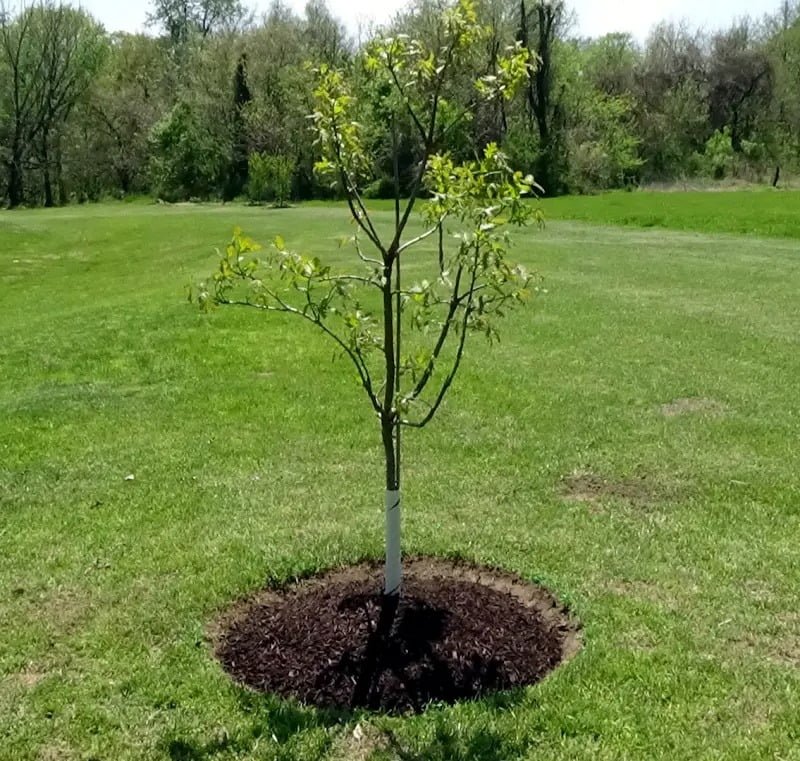
When picking a tree, think about these things:
- Size: How big will the tree get? Make sure you have enough space.
- Climate: Can the tree survive in your area? Check your hardiness zone.
- Soil: Does your soil match what the tree needs?
- Sun: How much sunlight does the spot get?
- Purpose: Do you want shade, fruit or just something pretty to look at?
Remember, trees are a long-term investment. Take your time to choose the right one for your needs and space. The USDA Plant Hardiness Zone Map is an invaluable tool for determining which trees will thrive in your area.
Caring for Your New Tree
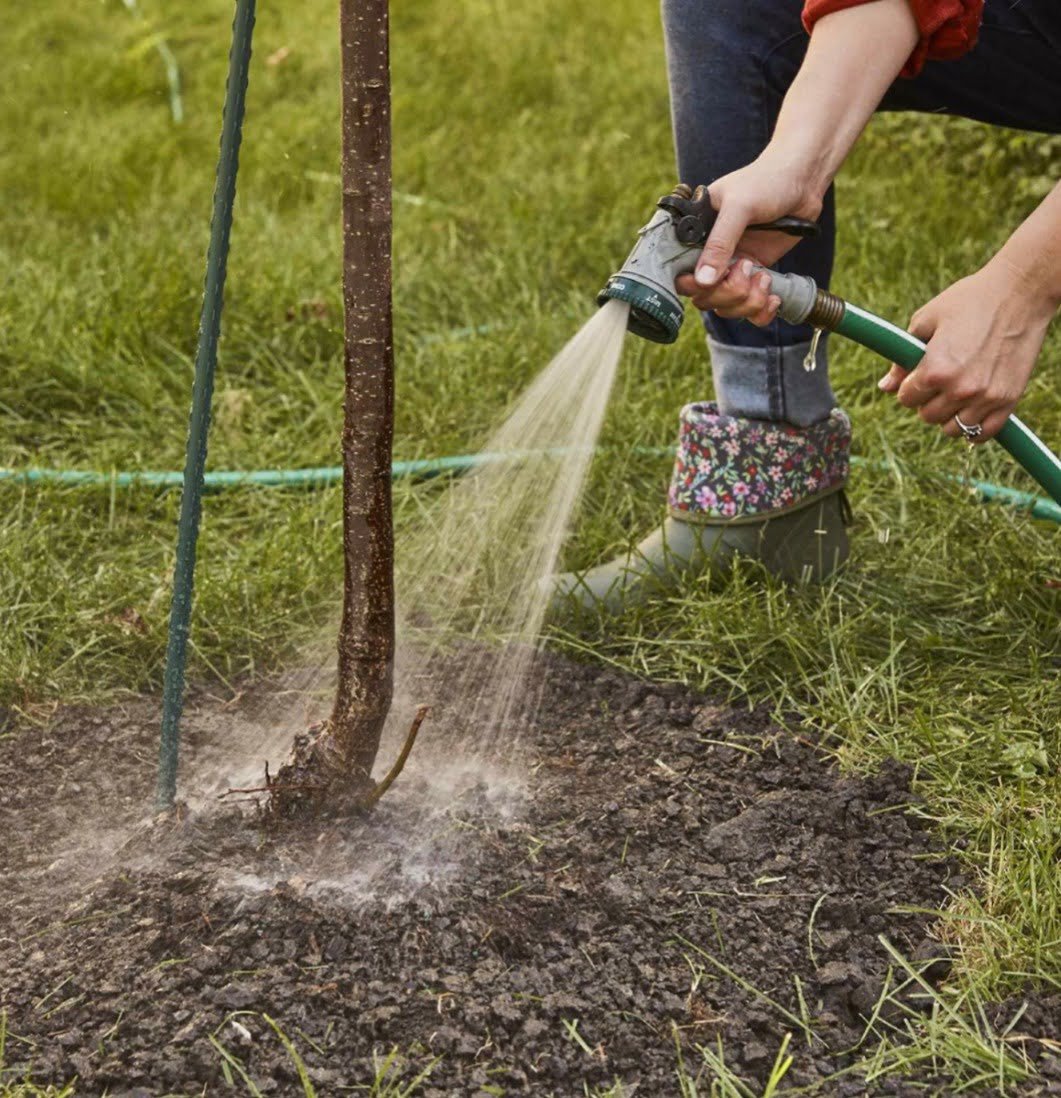
Once you’ve picked your ‘N’ tree, here’s how to keep it healthy:
- Water regularly, especially when it’s young.
- Mulch around the base to keep moisture in and weeds out.
- Prune dead or damaged branches to keep the tree healthy.
- Fertilize if needed, but don’t overdo it.
- Watch for pests or diseases and treat them early.
With good care, your tree will grow strong and beautiful for years to come. Proper tree care techniques can significantly extend the life and improve the health of your new tree.
The Environmental Impact of Trees
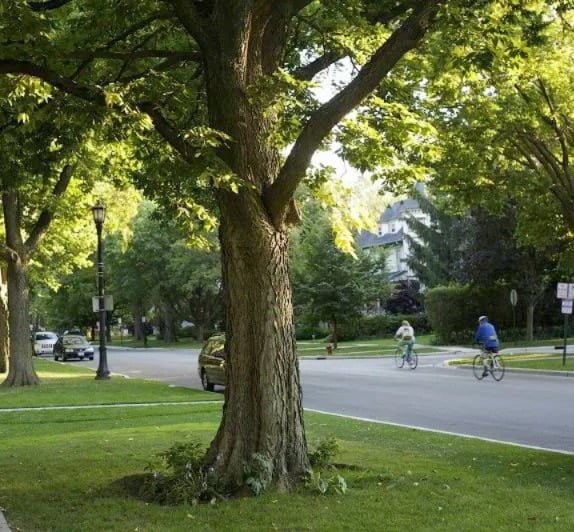
Trees do more than just look pretty. They play a crucial role in our environment:
- Air Purification: Trees absorb pollutants and release oxygen, improving air quality.
- Climate Control: They help cool our cities and fight climate change by absorbing CO2.
- Soil Conservation: Tree roots prevent soil erosion and improve soil quality.
- Wildlife Habitat: Many animals rely on trees for food and shelter.
- Water Management: Trees help manage stormwater runoff and improve water quality.
Urban forestry research shows that increasing tree cover in cities can have significant environmental and health benefits.
Trees in Culture and History
Trees have always been important in human culture. Many ‘N’ trees have interesting stories:
- The Neem tree is sacred in Indian culture and has been used in traditional medicine for thousands of years.
- The Northern Red Oak is the state tree of New Jersey and the provincial tree of Prince Edward Island Canada.
- The Nutmeg tree played a major role in colonial history, with wars fought over control of the spice trade.
Ethnobotanical studies reveal the deep connections between human cultures and their local tree species.
Trees that start with ‘N’ offer a wide range of options for your landscape. From the towering Narra to the compact Natal Plum, there’s an ‘N’ tree for every situation.
Whether you’re looking for shade, fruit or just a beautiful addition to your yard, one of these trees might be perfect for you. Remember to consider your space, climate and needs when choosing a tree.
Trees are more than just plants. They’re living things that can become a part of your home and life for many years. Choose wisely, care for your tree well and it will reward you with beauty, shade and maybe even fruit for decades to come.
So, which ‘N’ tree caught your eye? Whether you’re planting a forest giant like the Northern Red Oak or a compact fruit tree like the Nectarine, you’re making a choice that will benefit you and the environment for years to come.